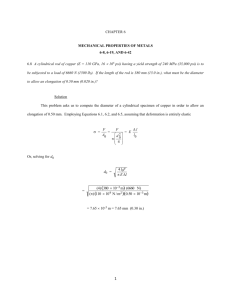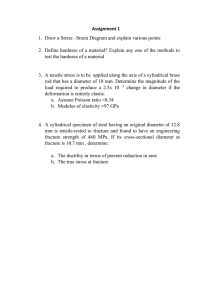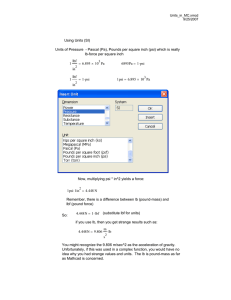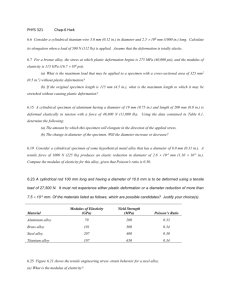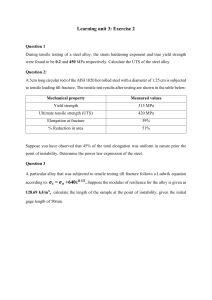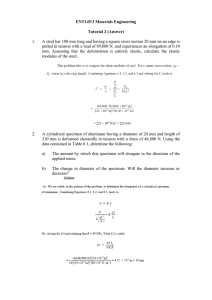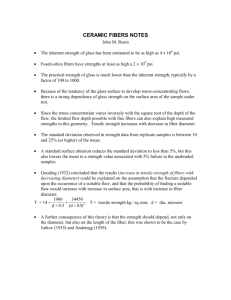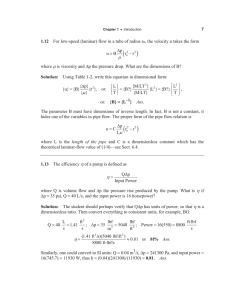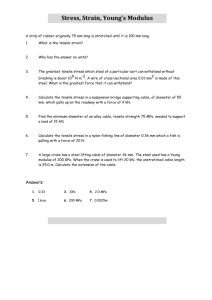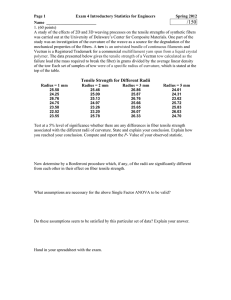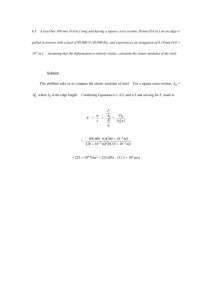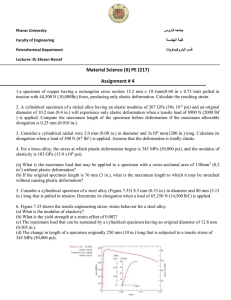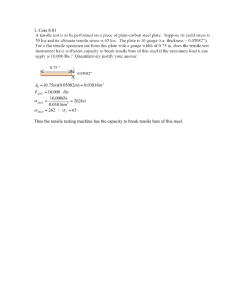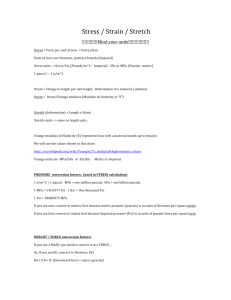ASSIGNMENT_PROBLEM_STATEMENT_CHAPTER_6
advertisement
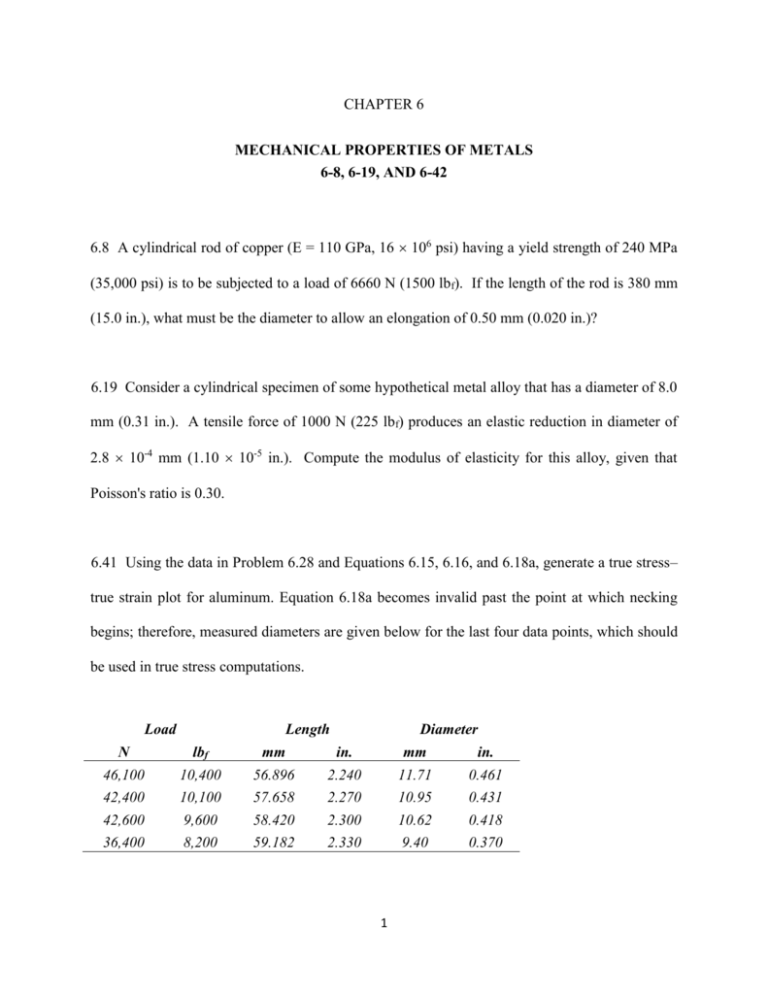
CHAPTER 6 MECHANICAL PROPERTIES OF METALS 6-8, 6-19, AND 6-42 6.8 A cylindrical rod of copper (E = 110 GPa, 16 106 psi) having a yield strength of 240 MPa (35,000 psi) is to be subjected to a load of 6660 N (1500 lbf). If the length of the rod is 380 mm (15.0 in.), what must be the diameter to allow an elongation of 0.50 mm (0.020 in.)? 6.19 Consider a cylindrical specimen of some hypothetical metal alloy that has a diameter of 8.0 mm (0.31 in.). A tensile force of 1000 N (225 lbf) produces an elastic reduction in diameter of 2.8 10-4 mm (1.10 10-5 in.). Compute the modulus of elasticity for this alloy, given that Poisson's ratio is 0.30. 6.41 Using the data in Problem 6.28 and Equations 6.15, 6.16, and 6.18a, generate a true stress– true strain plot for aluminum. Equation 6.18a becomes invalid past the point at which necking begins; therefore, measured diameters are given below for the last four data points, which should be used in true stress computations. Load Length Diameter N lbf mm in. mm in. 46,100 42,400 42,600 36,400 10,400 10,100 9,600 8,200 56.896 57.658 58.420 59.182 2.240 2.270 2.300 2.330 11.71 10.95 10.62 9.40 0.461 0.431 0.418 0.370 1 6-42: A tensile test is performed on a metal specimen, and it is found that a true plastic strain of 0.2 is produced when a true stress of 575 Mpa; for the same metal the value of K is 860Mpa; calculate the true strain that results from the application of a true stress of 600Mpa. 2
